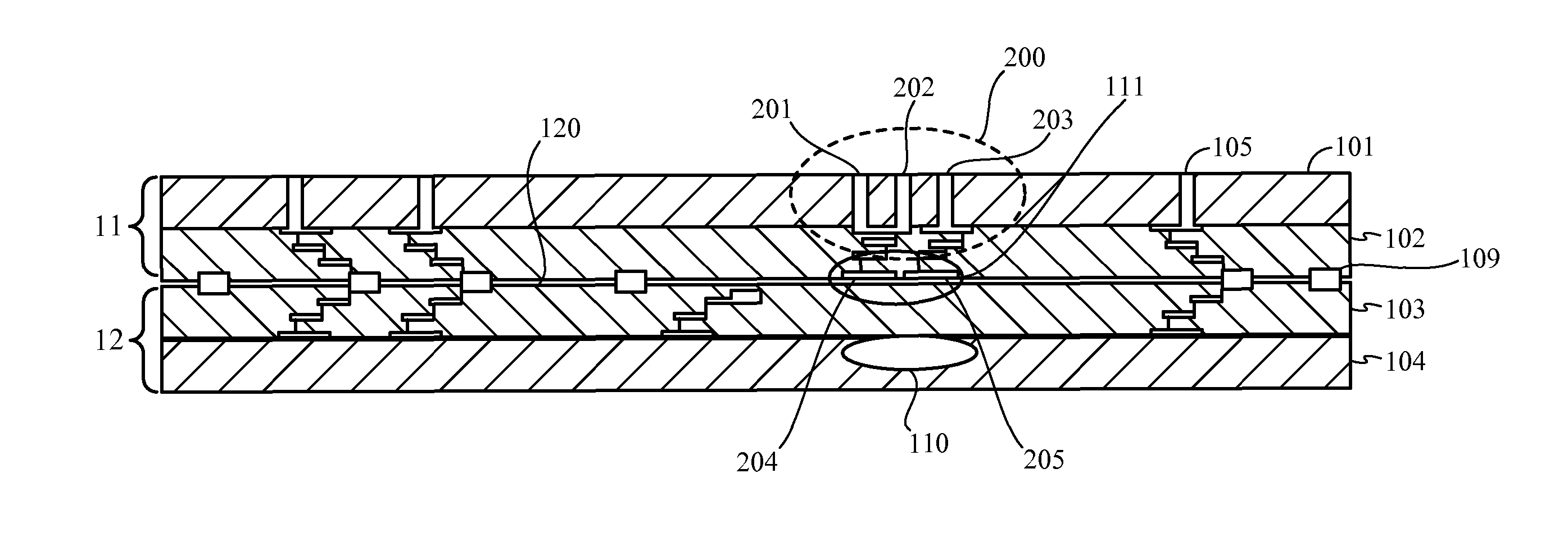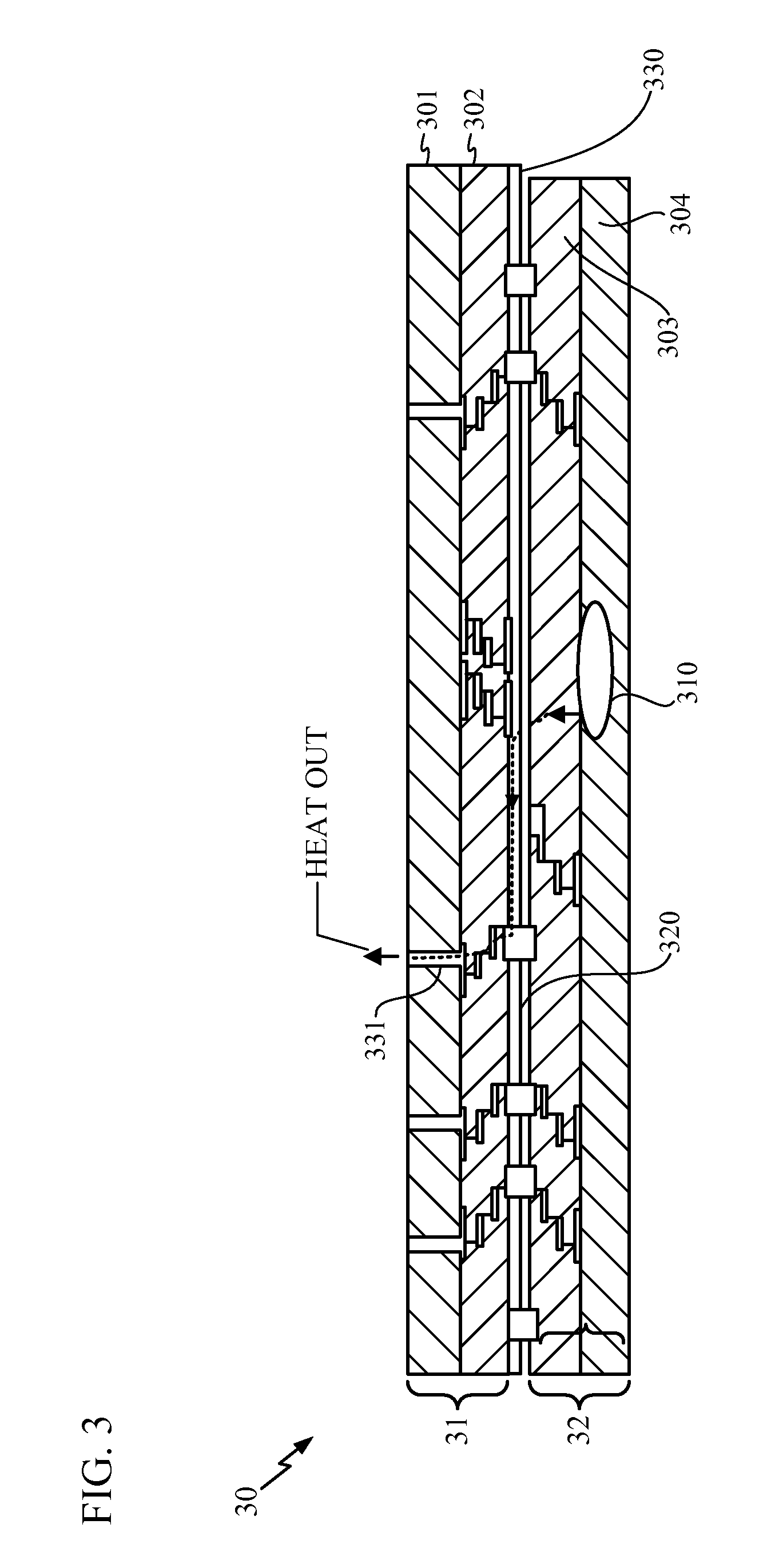3-D integrated circuit lateral heat dissipation
a technology of integrated circuits and heat dissipation, which is applied in the field of multitiered (3d) integrated circuits, can solve the problems of increasing thermal density, hot spots, and little ability to move heat away from heat sources, and achieves the effect of assisting heat dissipation
- Summary
- Abstract
- Description
- Claims
- Application Information
AI Technical Summary
Benefits of technology
Problems solved by technology
Method used
Image
Examples
Embodiment Construction
[0019]FIG. 1 illustrates one aspect of thermal trouble conditions that could exist with 3-D integrated circuits. As shown in FIG. 1, a die 11 is stacked with a die 12. The active layer of die 11 is a layer 102 and the active layer of die 12 is a layer 103. This is an exemplary arrangement as the active layers of the dies could be in any orientation, up or down.
[0020]Vias 105 run through the substrate layer 101 of the die 11. Vias could be constructed in the layers 102, 103 and / or 104 as desired. Electrical paths 107 and 108 form an interconnect between the dies. Seal 109 acts to prevent non-desired contaminants from entering the area 120 between the respective dies 11, 12.
[0021]Element 108 is normally on the scale of 30 microns or less and normally forms a copper or a tin copper metal to metal bond. Area 120 is usually an air gap. The gap 120 can be in the range of less than 10 micron.
[0022]A hot spot 110 is on the die 12 and the challenge is to move heat from this relatively small ...
PUM
 Login to View More
Login to View More Abstract
Description
Claims
Application Information
 Login to View More
Login to View More - R&D
- Intellectual Property
- Life Sciences
- Materials
- Tech Scout
- Unparalleled Data Quality
- Higher Quality Content
- 60% Fewer Hallucinations
Browse by: Latest US Patents, China's latest patents, Technical Efficacy Thesaurus, Application Domain, Technology Topic, Popular Technical Reports.
© 2025 PatSnap. All rights reserved.Legal|Privacy policy|Modern Slavery Act Transparency Statement|Sitemap|About US| Contact US: help@patsnap.com



